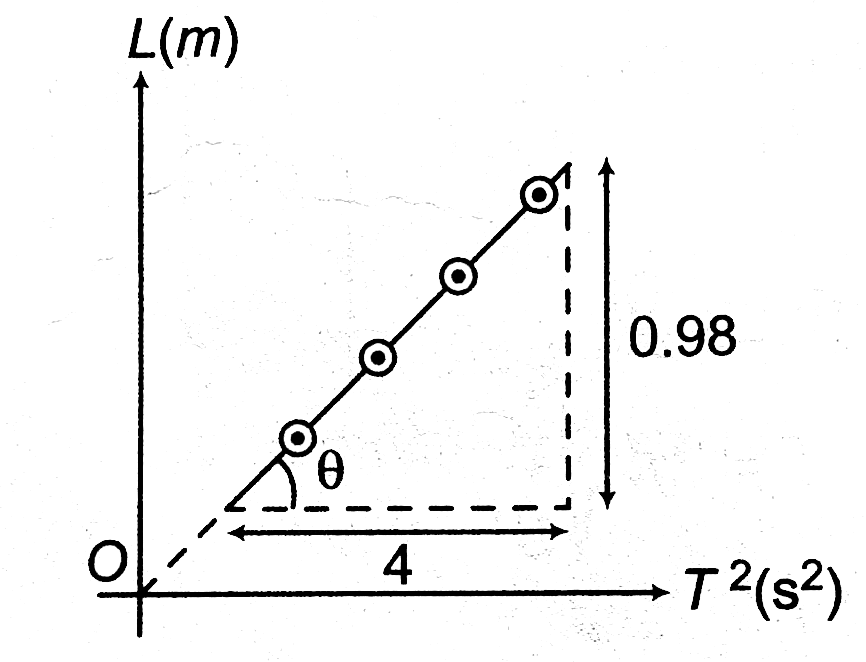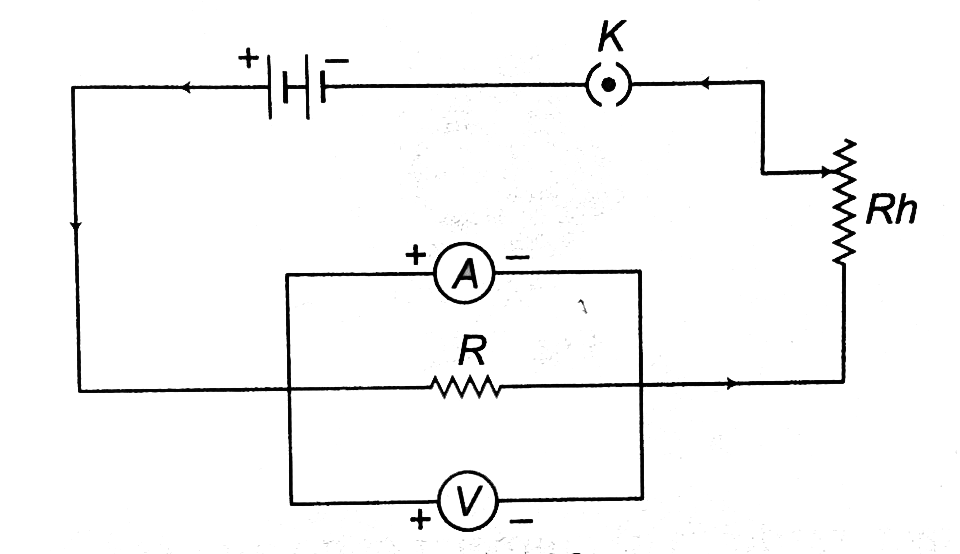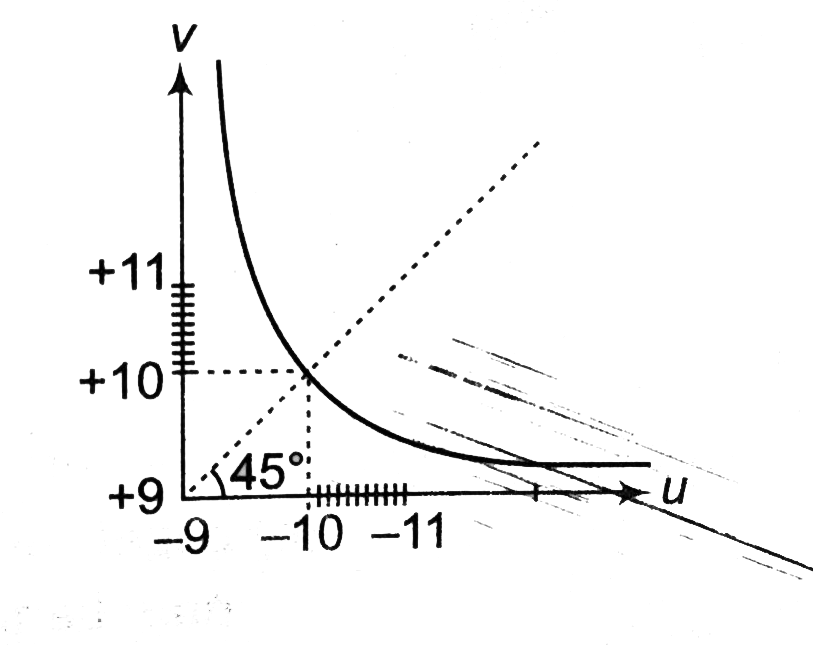Complete Solutions to Example of chapter EXPERIMENTS of Class 11 book with complete answers and questions
| Class 11 | PHYSICS |
| Chapter | EXPERIMENTS |
| DC PANDEY | Example |
| Number Of Questions | 27 |
| Academic Year | 2023-24 |
If `n^(th)` division of main scale coincides with `(n + 1)^(th)` divisions of vernier scale. Given one main scale division is equal to 'a' units. Find the least count of the vernier.
View SolutionIn the diagram shown in figure, find the magnitude and nature of zero error.
 .
.
View SolutionThe smallest division on main scale of a vernier caliper is `1 mm and 10` vernier divisions coincide with `9` main scale divisions. While measuring the length of a line, the zero mark of the vernier scale lies between `10.2 cm and 10.3 cm` and the third division of vernier scale coincides with a main scale division.
(a) Determine the least count of the caliper.
(b) Find the length of the line.
View SolutionThe pitch of a screw gauge is `1 mm and there are 100 divisions` on the circular scale. In measuring the diameter of a sphere there are six divisions on the linear scale and forty divisions on circular scale coincide with the reference line. Find the diameter of the sphere.
View SolutionThe pitch of a screw gauge is 1 mm and there are `100 "divisions"` on circular scale. When faces `A` and `B` are just touching each without putting anything between the studs 32nd divisions of the circular scale (below its Zero) coincides with the reference line. When a glass plate is placed between the studs, the linear scale reads 4 divisions and the circular reads 16 divisions. Find the thickness of the glass plate. Zero of linnear scale is not hidden from circular scale when A and B touches each other.
View SolutionIn a certain observation we get `l =23.2 cm,r=1.32cm` and time taken for 20 oscillations was 20.0 sec. Taking `pi^2=10,`find the value of g in proper significant figures.
View SolutionFor different values of `L`, we get different values of `T^2`. The graph between `L` versus `T^2` ia as shown in figure. Find the value of 'g' from the given graph.(Take `(pi)^2= 10)`.
 .
.
View SolutionIn a certain obervation we got,`l = 23.2cm,r =1.32cm` and time taken for 10 oscillations was 10.0 s. Find, maximum percentage error in determinaton of 'g'.
View SolutionThe adjacent graph shows the estension `(Deltal)` of a wire of length 1m suspended from the top of a roof at one end and with a load W connected to the other end. If the cross-sectional area of the wire is `10^-6m^2`, calculate the Young's modulus of the material of the wire.

View SolutionIn Searl's experiment, which is used to find Young's Modulus of elasticity, the diameter of experimental wire is `D = 0.05cm` (measured by a scale of least count `0.001cm`) and length is `L = 110cm` (measured by a scale of least count `0.1cm`). A weight of `50N` causes an extension of `X = 0.125 cm` (measured by a micrometer of least count `0.001cm`). find the maximum possible error in the values of Young's modulus. Screw gauge and meter scale are free error.
View SolutionThe mass, specific heat capacity and the temperature of a solid are 1000g,(1/2) ((cal)/g) and 80 degrees C respectively. The mass of the liquid and the calorimeter are 900g` and 200g. Initially, both are at room temperature 20 degrees C. Both calorimeter and the solid are made of the same material. In the steady state, temperature of mixture is 40 degrees C, then specific heat capacity of the unknown liquid is;
View SolutionIn electrical calorimeter experiment, voltage across the heater is `100.0 V` and current is `10.0 A`. Heater is switched on for t `= 700.0 s`. Room temperature is `theta_0 = 10.0^(@)C` and final temperature of calorimeter and unknown liquid is `theta_f = 73.0^(@) C`. Mass of empty calorimeter is `m_1 = 1.0kg` and combined mass of calorimeter and unknown liquid is `m_2 = 3.0 kg`. Find the specificheat capacity of the unknown liquid in proper significant figures. Specific heat of calorimerter = `3.0xx10^3 j//kg .^(@) C`.
View SolutionCorresponding to given observation calculate speed of sound. Frequency of tuning fork =340 Hz.
`{:("Resonance","Length from the water level in (cm)",),(,"During falling","During rising"),("First",23.9,24.1),("Second",73.9,74.1):}`.
View SolutionIf a tuning fork of frequency `(340 pm 1 %)` is used in the resonance tube method and the first and second resonance lengths are `20.0cm` and `74.0 cm` respectively. Find the maximum possible percentage error in speed of sound.
View SolutionWhat result do you expect in above experiment, if by mistake, voltmeter is connected in series with the resistance.
View SolutionWhat result do you expect in above experiment if by mistake, ammeter is connected in parallel with voltmeter and resistance as shown in figure?
 .
.
View SolutionIn the experiment of Ohm's law, when potential difference of 10.0 V is applied, current measured is 1.00 A. If length of wire is found to be 10.0cm and diameter of wire 2.50 mm, then find maximum permissible percentage error in resistivity.
View SolutionDraw the circuit for experimental verfication of Ohm's law using a source of variable `DC` voltage, a main resistance of `100 (Omega)`, two galvanometers and two resistances of values `10^(6) Omega` and `10^-3` respectively. Clearly show the positions of the voltmeter and the ammeter.
View SolutionIf resistance`R_(1)` in resistance box is `300 Omega`, then the balanced length is found to be `75.0 cm` from end `A`.The diameter of known wire is `1 mm` and length of the unknown wire is `31.4 cm`. Find the specific resistance of the unknown wire.
View SolutionIn a meter bride, null point is `20 cm`, when the known resistance `R` is shunted by `10 Omega` resistance, null point is found to be shifted by `10 cm` . Find the unknown resistance `X`.
View SolutionIf we use `100 Omega` and `200 Omega` in place of `R` and `X` we get null pont deflection, `l = 33cm`. If we intercharge the resistors, the null point length is found to be `67 cm` Find end corrections `prop and beta`.
View SolutionTo locate null point, deflection battery key `K_(1)` is pressed before the galvanometer key `K_(2)`. Explain why?
View SolutionWhat are the maximum and minimum values of unknown resistance `X`, which can be determined using the post office box shown in the figure?
View SolutionTo find index error `e` distance between object needle and pole of the concave mirror is `20 cm`. The separation between the indices of object needle and mirror was observed to be `20.2 cm` in some observation, the observed image distance is `20.2 cm` and the object distance is `30.2 cm` find
(a) the index error e.
(b) focal length of the mirror `f`.
View SolutionIn `u-v` method to find focal length of a concave mirror, if object distance is found to be `10.0 cm` and image distance was also found to be `10.0 cm`, then find maximum permissible error in (f).
View SolutionA student performed the experiment of determination of focal length of a concave mirror by (u-v) method using an optical bench of length `1.5m`. The focal length of the mirror used is `24 cm`. The maximum error in the location of the image can be ` 0.2 cm`. The 5 sets of (u,v) values recorded by the student (in cm) are `(42,56), (48,48),(60,33),(78,39)`. the data set (s) that cannot come from experiment and is (are) incorrectly recorded, is (are)
(a) `(42,56)`
(b)`(48,48)`
(c)` (66,33)`
(d) `(78,39)`.
View SolutionThe graph between object distance `u` and image distance `v` for `a` lens is given below. The focal length of the lens is.
(a) `5 pm 0.1`
(b) `5 pm 0.05`
( c) `0.5 pm 0.1`
(d) `0.5 pm 0.05`.
 .
.
View Solution
Example questions and complete solutions for chapter EXPERIMENTS of DC PANDEY ENGLISH of Class 11